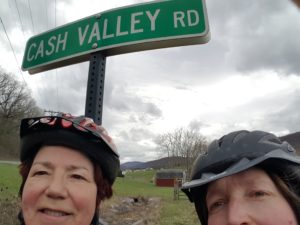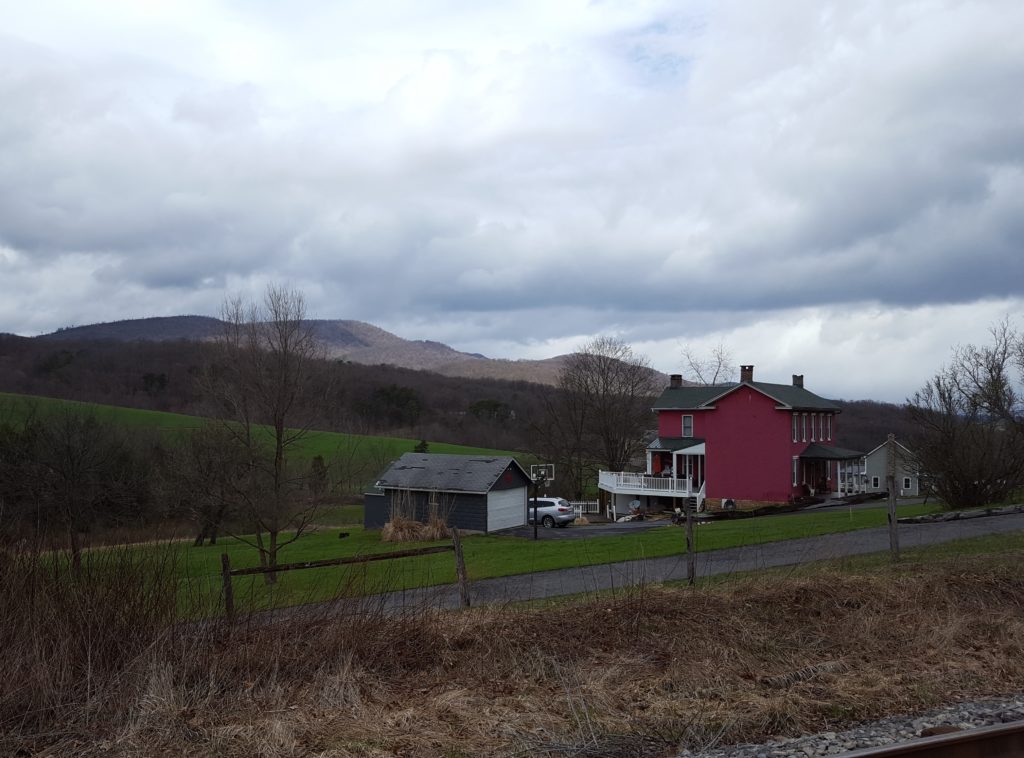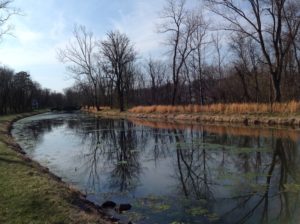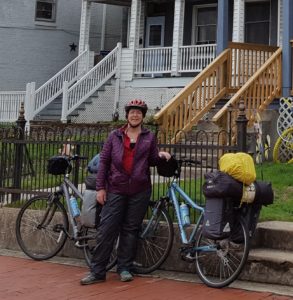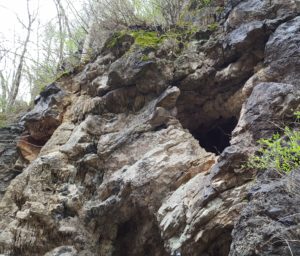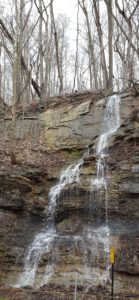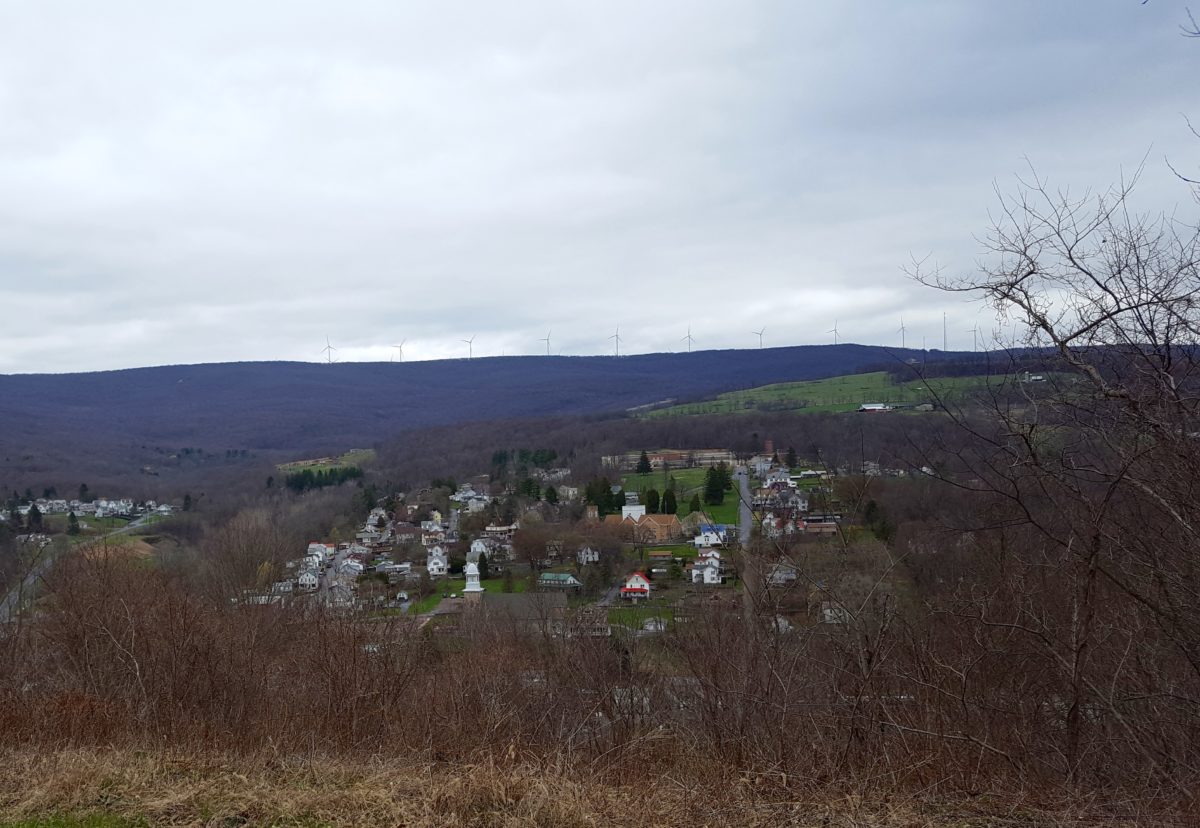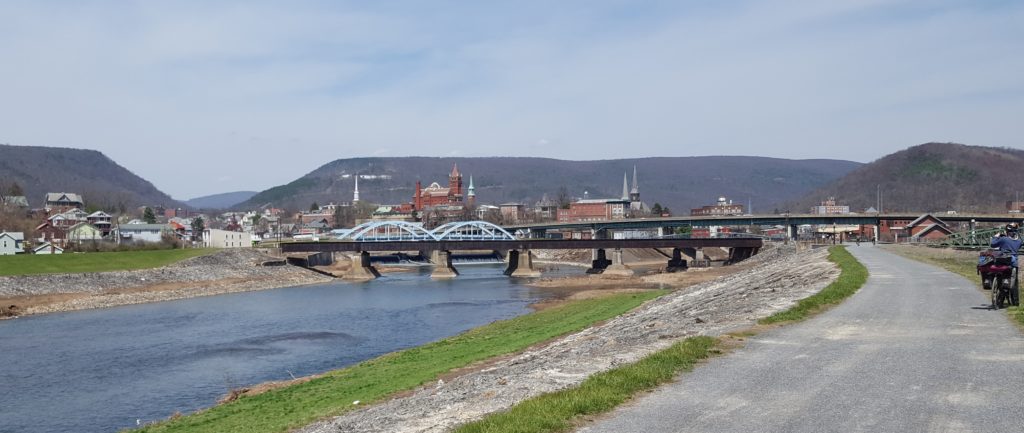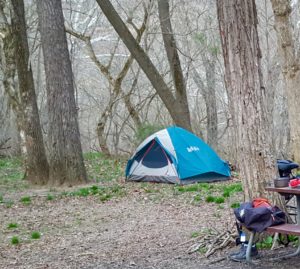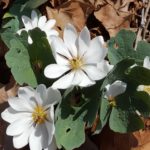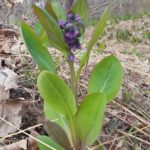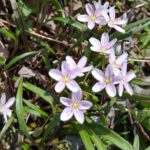It was snowing in Frostburg (yes, really), so Angela and I postponed for one day our departure from Maryland into Pennsylvania. The map here indicates elevation gain to the Eastern Continental Divide, so you get the idea.

Before you get too excited, let me just say our climb to this point from Washington, DC rarely amounted to more than a 1.5 percent grade. That’s why it took us eight days to get to Frostburg. Which is a lot, since, when we looked at driving the same distance by car, Google maps informed us the trip would take 2 hours and 17 minutes.
“Just don’t think about it,” Angela said.
After snow flurries and bitter wind all day Tuesday (while we languished in the Allegheny Trail House B&B), Wednesday dawned sunny and bright.
 At a viewpoint on the Maryland side, we found someone to take our picture.
At a viewpoint on the Maryland side, we found someone to take our picture.
“You’ll love the tunnel,” the man said as we parted ways.
Tunnel? Sure enough, just around the bend we encountered the Big Savage Tunnel, 3,295-feet long, which earns this write-up on the National Park Service website.
Big Savage Tunnel [is] named for surveyor Thomas Savage who, along with the rest of his party, was stranded here in the winter of 1736. According to the legend, he offered himself up as food to save the rest of the party from starving. A rescue team showed up, saving Savage’s life. His companions were so grateful that they named the Savage River for him.
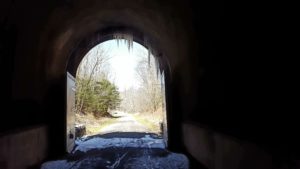 We had a headlamp all set to go, but the tunnel was well-lit by ceiling lights. Cold, though. Icicles dripping throughout.
We had a headlamp all set to go, but the tunnel was well-lit by ceiling lights. Cold, though. Icicles dripping throughout.
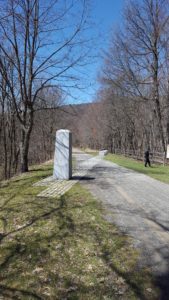 We knew we’d reached the border with Pennsylvania when we crossed the Mason-Dixon Line. The monument made me strangely sad on such a beautiful day, as I thought of family feuds (the original reason for the Mason-Dixon had to do with a 1760s feud between the Penn and Calvert families) and the terrible bloodshed of the Civil War.
We knew we’d reached the border with Pennsylvania when we crossed the Mason-Dixon Line. The monument made me strangely sad on such a beautiful day, as I thought of family feuds (the original reason for the Mason-Dixon had to do with a 1760s feud between the Penn and Calvert families) and the terrible bloodshed of the Civil War.
We didn’t linger long. In twenty more miles (downhill at last), we reached Rockwood and the Mill Shoppe, Americana at it’s finest.

